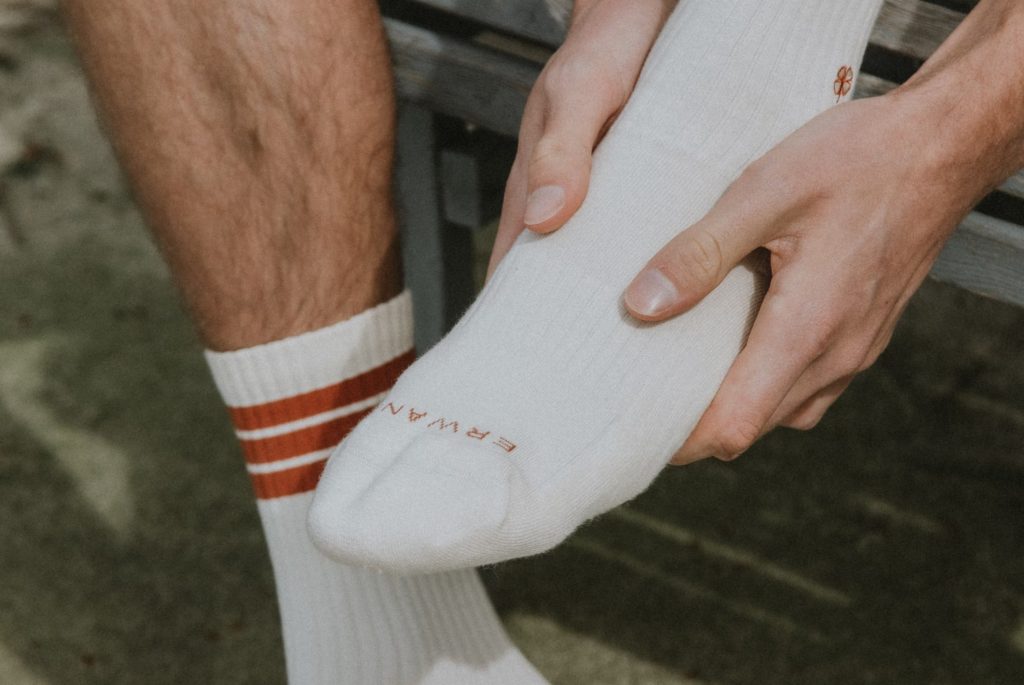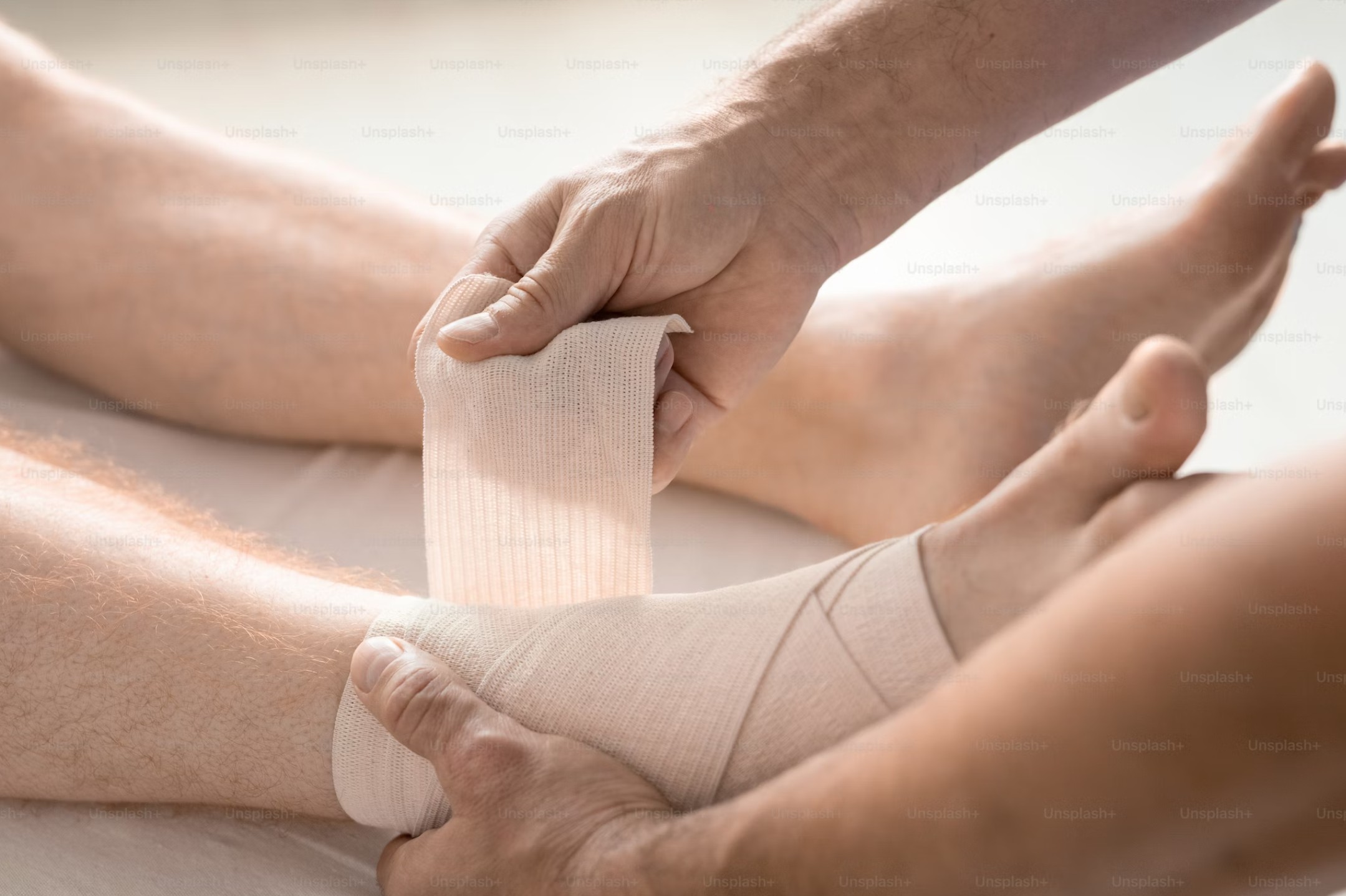Recognizing and Treating an Infection in a Sprained Ankle
A sprained ankle is a common injury that many people experience at some point in their lives. While most sprains heal with proper care and rest, there is a potential risk of infection if the injury is not managed correctly. Sprained Ankle Infection can cause additional complications and delay the healing process. This article aims to provide valuable insights into recognizing the signs of infection in a sprained ankle and understanding the appropriate treatment measures to ensure a smooth recovery.
Understanding Sprained Ankles
What is a Sprained Ankle?
A sprained ankle occurs when the ligaments surrounding the ankle joint are stretched or torn due to sudden twisting or rolling of the foot. This can happen during physical activities, sports, or even simple daily movements on uneven surfaces. Sprained ankles are common among athletes and individuals who are physically active.

Types of Ankle Sprains
There are different grades of ankle sprains, ranging from mild to severe, depending on the extent of ligament damage. The three main types of sprained ankles include:
Grade 1 Ankle Sprain
Grade 1 is the mildest type of ankle sprain, often resulting from stretching or slight tearing of the ligaments with minor swelling and difficulty in walking.
Grade 2 Ankle Sprain
A grade 2 sprain occurs when a more significant tearing of the ligaments happens, causing moderate pain, swelling, and bruising. Walking on the affected ankle is usually painful but not impossible.
Grade 3 Ankle Sprain
Grade 3 is the most severe type where there is a complete tear of one or more ligaments. This level often results in extensive swelling, bruising, and severe pain, making it difficult or impossible to bear weight on the foot.
Recognizing Sprained Ankle Infection
Identifying Early Signs
Infection in a sprained ankle can occur if the injury is not adequately treated or if proper hygiene measures are not followed. It’s essential to recognize the early signs of infection to prevent further complications. Some common signs of infection include:

- Increasing Pain: Persistent or worsening pain that doesn’t subside with rest and over-the-counter pain medications.
- Redness and Swelling: The affected area may become red, swollen, and warm to the touch.
- Pus or Discharge: The presence of pus or fluid drainage from the injury site.
- Fever: In some cases, an infection may cause a low-grade fever.
- Limited Range of Motion: Difficulty in moving the ankle or bearing weight on the affected foot.
Importance of Prompt Medical Attention
If any signs of infection are observed, it is crucial to seek immediate medical attention. Infections can spread rapidly and may lead to serious complications if left untreated. A healthcare professional will be able to assess the injury, determine if an infection is present, and recommend the appropriate course of action.
Treating Infection in a Sprained Ankle
Antibiotics and Medications
In cases where an infection is confirmed, the primary treatment involves antibiotics to combat the bacterial growth. The type and duration of antibiotic treatment will depend on the severity of the infection. It’s essential to take the prescribed medication as directed by the healthcare provider to ensure effective treatment.
Rest and Elevation
Rest is a critical component of the healing process for both ankle sprains and infections. Adequate rest allows the body to focus on repairing the damaged tissues and fighting the infection. Additionally, elevating the affected ankle can help reduce swelling and promote better blood circulation to the injured area.
Warm Compresses and Dressings
Warm compresses can provide relief from pain and reduce inflammation in the affected ankle. Applying a warm compress for 15-20 minutes several times a day can be beneficial. Proper wound dressings can also help keep the area clean and prevent further contamination.
Supportive Devices
In some cases, using crutches or a brace may be necessary to limit weight-bearing on the affected ankle during the healing process. These supportive devices can help protect the ankle and prevent further strain on the ligaments.
Orthotic Insoles in the Treatment of Sprained Ankle Infections
Stabilization and Support
Orthotic insoles can provide stability to the affected ankle by aligning the foot in the right functional position, thus minimizing the chance of re-injury along the healing process.
Reducing Pressure and Pain
By distributing weight evenly across the foot, orthotic insoles can take off excess pressure from the affected ankle, reducing pain and discomfort, which is vital when dealing with an infection.
Improving Healing and Rehabilitation
The use of the right orthotics can promote a more natural foot mechanics, leading to an improvement in joint motion. This can aid in the healing process from an ankle sprain infection, as well as in the rehabilitation period, by improving functionality and mobility.
Preventing Infections in Sprained Ankles
Practice Good Hygiene
Proper hygiene is essential to prevent infections in sprained ankles. Clean the injured area daily with mild soap and water and pat it dry gently. Avoid soaking the foot in water, as it may increase the risk of infection.
Follow Medical Advice
Follow the instructions provided by your healthcare provider regarding wound care, medication, and any physical therapy or exercises recommended for a full recovery.
Avoid Premature Activity
Refrain from engaging in strenuous activities or putting weight on the affected ankle until it has fully healed and you have received clearance from your healthcare provider.
Conclusion
A sprained ankle can be a painful and inconvenient injury, and the risk of infection makes it even more crucial to take proper care. Recognizing the signs of infection, such as increasing pain, redness, and swelling, is essential in seeking prompt medical attention. Treating an infection in a sprained ankle typically involves antibiotics, rest, elevation, warm compresses, and supportive devices. Following medical advice and practicing good hygiene can help prevent infections and promote a smooth recovery process.
FAQs
- Can I treat a sprained ankle infection at home with over-the-counter medications? No, it is essential to seek medical attention for a sprained ankle infection. A healthcare professional will assess the severity of the infection and prescribe appropriate antibiotics and treatments.
- How long does it take for a sprained ankle infection to heal? The healing time for a sprained ankle infection can vary depending on the severity of the infection and the individual’s overall health. In some cases, it may take several weeks for a complete recovery.
- Can I resume physical activities after the infection has cleared? It’s essential to follow your healthcare provider’s advice regarding resuming physical activities. Gradual re-introduction of activities may be recommended to avoid re-injury.
- Are there any exercises that can help strengthen the ankle after a sprain and infection? Yes, your healthcare provider may recommend specific exercises to help strengthen the ankle and improve its range of motion after a sprain and infection.
- Is it possible to prevent sprained ankles altogether? While it’s not always possible to prevent all ankle sprains, wearing appropriate footwear, maintaining good balance and strength, and avoiding hazardous surfaces can reduce the risk of injury.
- When can I resume physical activities after a sprained ankle infection? Your doctor will provide guidance on when it’s safe to resume physical activities. It’s crucial to follow their recommendations to prevent reinjury or complications.
- Is there a risk of recurrence after a sprained ankle infection? While proper treatment and care can greatly reduce the risk, there’s always a possibility of recurrence. Following medical advice, maintaining good hygiene, and taking precautions during physical activities can help minimize this risk.
- What complications can arise from a sprained ankle infection? If left untreated, a sprained ankle infection can lead to more serious complications such as cellulitis (skin infection), abscess formation, septicemia (blood infection), or osteomyelitis (bone infection).
- Can I use over-the-counter orthotic insoles for a sprained ankle infection? Over-the-counter insoles can offer some level of support, but for a sprained ankle infection, it’s advisable to consult a healthcare professional or a podiatrist for personalized recommendations and potentially custom-made insoles.
- Can orthotic insoles prevent future sprained ankle infections? While orthotic insoles can’t prevent infections directly, they can promote proper foot and ankle alignment, potentially reducing the risk of certain injuries. However, practicing good hygiene, wearing appropriate footwear, and taking precautions during physical activities are also crucial for prevention.
- How long should I use orthotic insoles during my recovery from a sprained ankle infection? The duration of use will depend on the severity of your sprained ankle infection and your individual healing process. Your healthcare provider or podiatrist will guide you on how long to use orthotic insoles as part of your overall treatment plan.







